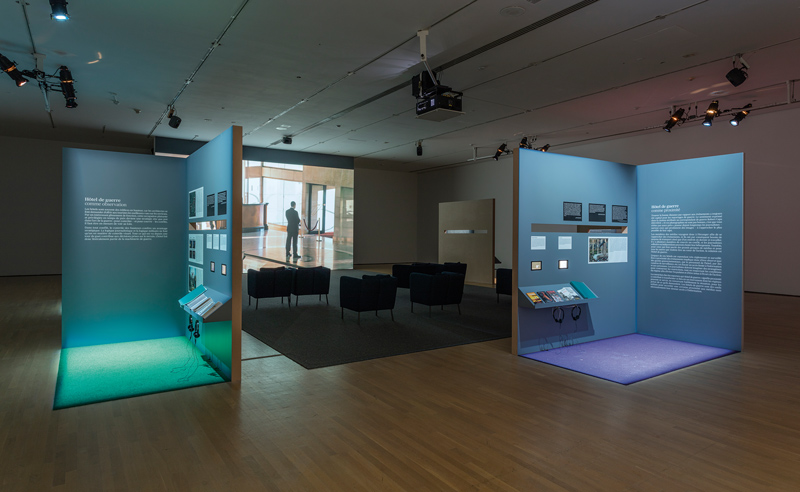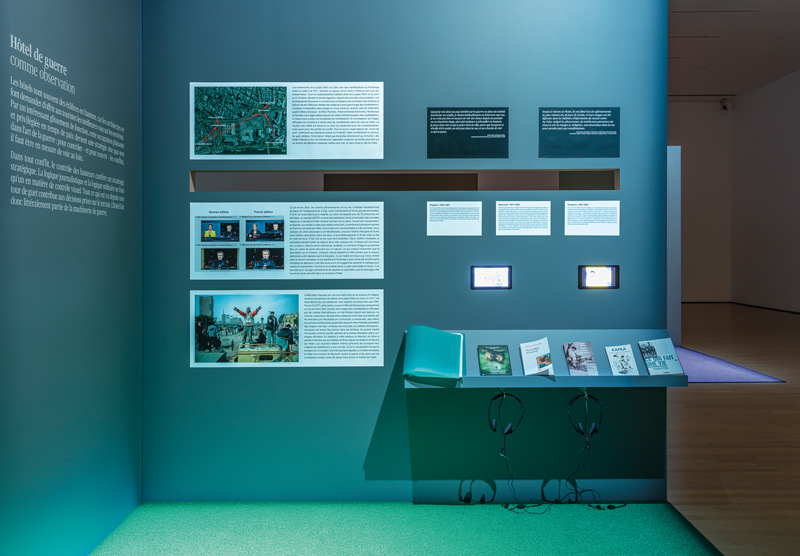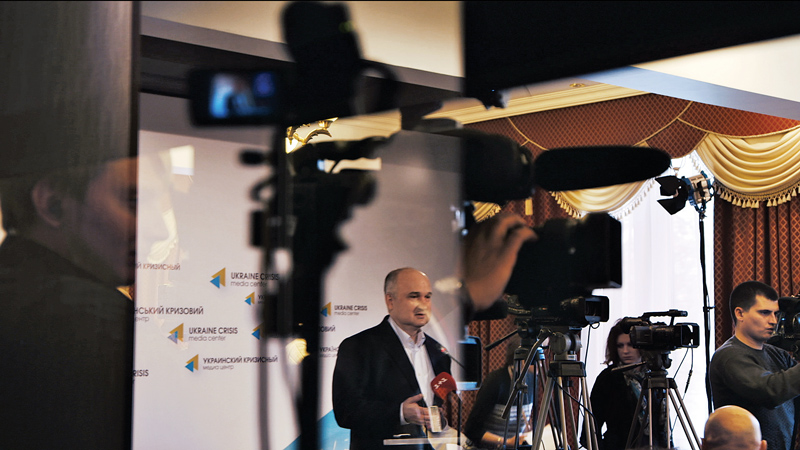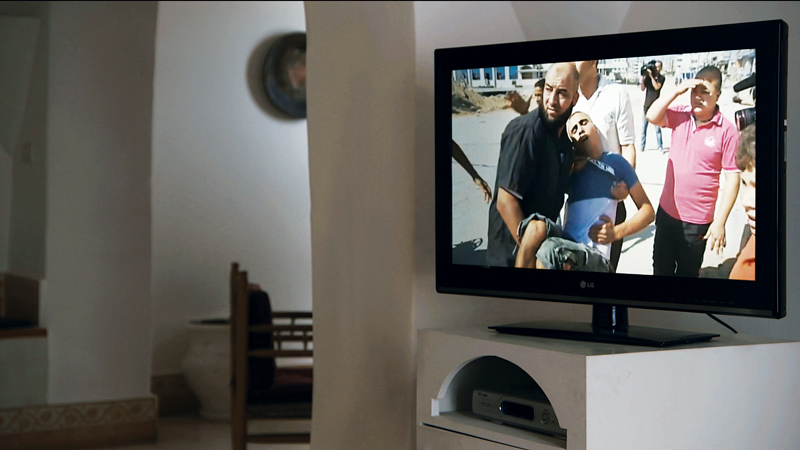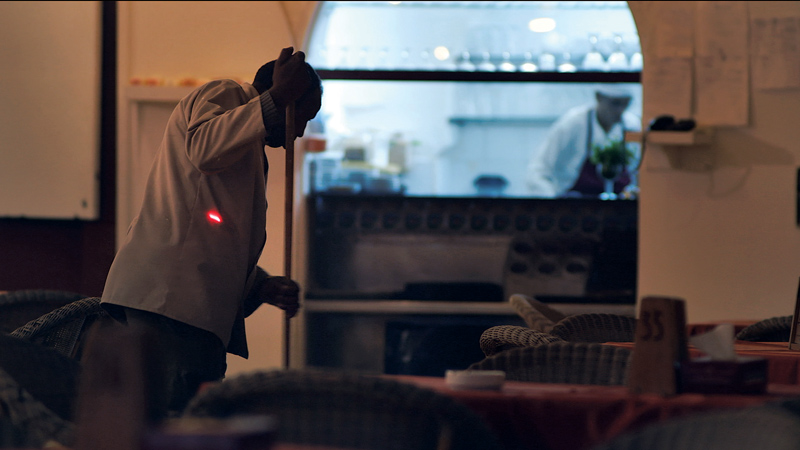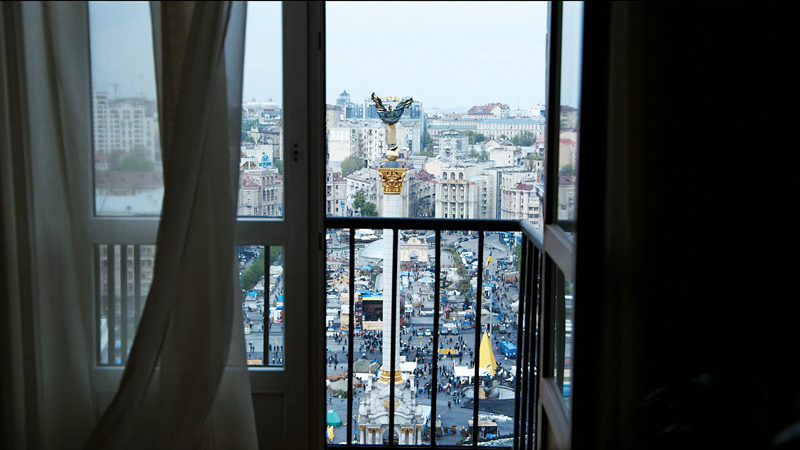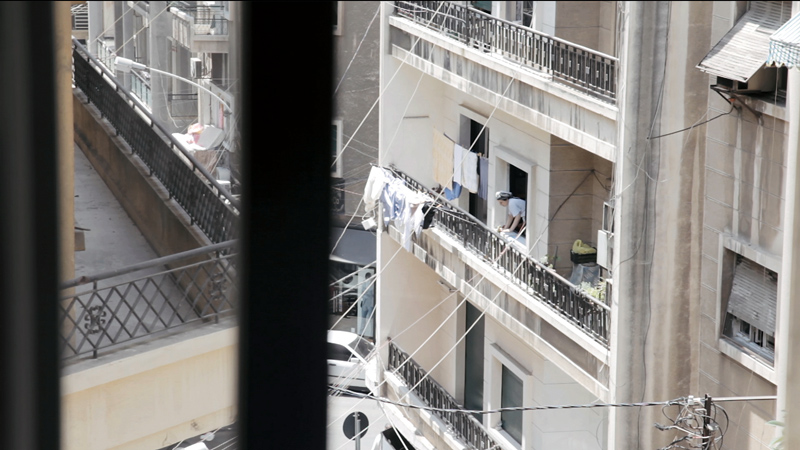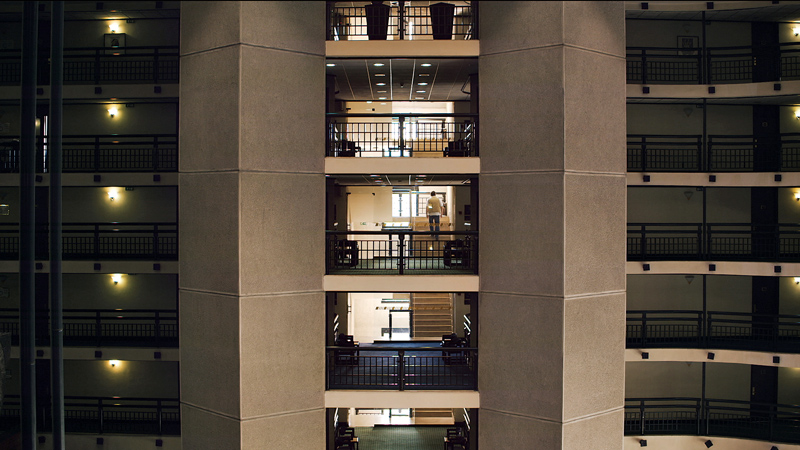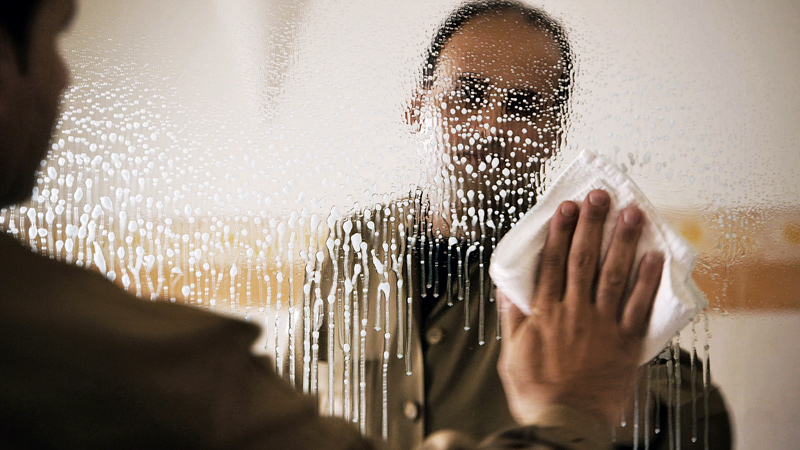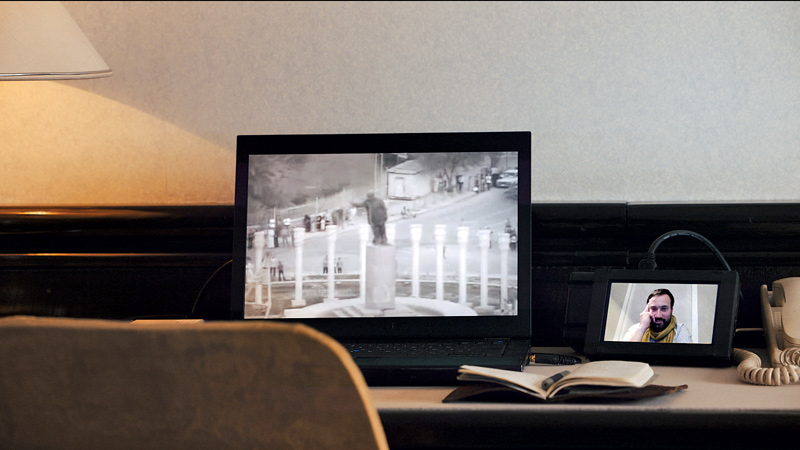[Fall 2017]
By Guillaume Lafleur
We are seeing more and more experimental documentary cinema at festivals, at which the programming naturally includes a fair dose of representation of geopolitical issues. Although environmental issues are core to this new trend, this is only one facet of productions that also explore both older and current forms of the film essay – a concept of filmmaking that is presumed to take an analytic approach to the image, centred on comprehension of its powers.
At the source of this current is situated the essential work of Harun Farocki, whose emblematic film Still Life (Stilleben, 1997) analyzes the set-up for a beer ad and the design of the light reflecting in the foamy beverage as an extension of the work of seventeenth-century Flemish masters. Farocki had done something similar previously, in An Image (Ein Bild, 1983), which documented a four-day photo session for Playboy in a Munich studio. Emanuel Licha’s work is deeply rooted in this type of approach. His new work, presented last spring at the Musée d’art contemporain de Montréal,1 is related to the trend in documentary cinema that involves taking solid formal points of view – a trend that has been validated by following the traditional levers of funding. Licha, who divides his time between France and Quebec, received support from the French Centre national du cinéma et de l’image animée and from the Montreal production house PRIM. Hotel Machine is thus a feature-length film in the current meaning of the term. It is Licha’s first production of this type, as he comes from the contemporary-art world and his work has usually been presented in galleries.
For the last ten years, Licha has been probing the signposted, formal, and political aspects of staging images. He may, for instance, challenge the powers of editing devices such as shot/reverse shot, which gives us an idea of the mechanics of associating two images in motion. Or he may dwell on the audio-visual apparatus of generalized surveillance – breaking with traditional narrative cinema – that associates the camera’s point of view with the voyeur’s. For some time, Licha has been interested in the theatre of operations – an expression linked, of course, to the rhetoric of war: a wartime site of control that is also a concrete space, such as a hotel, adapted to the context and related to subterfuge or to total staging.
First, I would like to describe how the film, titled Et maintenant regardez cette machine, is installed in the museum. This setting is intended essentially to offer us extra keys for interpreting the film, in the light of its reception in the screening room. The film becomes accessible in two ways: one, attached solely to the logic of the internal narrative through which the spectator views the entire film, in a linear fashion, and the other staging a critical apparatus with supporting documents. In the latter case, the screening room becomes an area that one may enter and leave as the film is playing. It has some benches and chairs – a sitting room reminiscent of the layout of lobbies of the hotels in which the film was shot. Bookshelves on either side of the screen are full of books that broaden the horizon for interpreting the film, enhancing and explaining the artist-researcher’s positions.
Specifically, Licha has installed in front of the screen five workstations for consulting visual archives, videos, and books. This is not simply an educational complement to what we see on the screen. In playing with a reference to the five hotels shown in his film (which I will discuss below), he has designed an observatory for spectators – a study nook where they may learn more about the filmmaker’s and the camera’s points of view. Here, Licha is probing more deeply ideas addressed in his preceding works, of which Mirages (2010) is perhaps the best example. This film transports us to an Iraqi village prefabricated in the California desert for the benefit of American soldiers in training. It was built to habituate soldiers to the look of Iraqi reality; through the use of multiple points of view, the film shows a link between the Hollywood-like staging and the need to comprehend enemy territory prior to conducting an attack in the theatre of operations.
Here, the configuration of the space is clearly a subject that the soldiers must study. But the actors performing as Iraqis also play this strange game, at a disturbing distance. Similarly, as viewers of Hotel Machine we are invited a bit further into these hotels than we would be if we simply watched a film, through the attentive staging of the screening room.
Hotel Machine takes place in five hotels that have been affected by or are still plunged into war. Through intelligent editing, the crises underway in the most sensitive places do not appear but always seem about to take place. This positioning is very coherent, because these hotels contain journalists, politicians, and an entire nocturnal wartime fauna that can be found in the bar, the halls, and the conference rooms. Licha shot the film in the Mayflower in Beirut, the Holiday Inn in Sarajevo, the Al-Deria in Gaza City, Hotel Ukraine in Kiev, and the Hyatt in Belgrade, where there was heavy bombing in early 1999. The film begins at the Sarajevo Holiday Inn, which was the best site from which to understand the theatre of operations and observe the forces in place.
In this respect, the film highlights the role of the fixer. It is the fixer who welcomes the journalists, the most sensitive guests, and preserves the inevitable tensions at the core of a temporary community. Discretion with regard to the clientele is required, as people from different camps are likely to find themselves in neighbouring rooms.
At the beginning of the film, a fixer speaks in a conference room with its usual lined-up chairs, trying to rearrange the space in front of him, which is now only a circle of ghosts, including that of journalist and writer Paul Marchand – the nicest of all, according to the fixer. In a way, the memory of Marchand’s suicide tears a hole in the space of the film. Also in a ghostly mode, a soundtrack of testimonials supports the images, although the experiences related did not occur in the place we are viewing.
In these war hotels, everyone is under surveillance; Licha shows us how much the cameras, in a sense, support the work of the fixers. The film’s obvious reference to Kafka’s The Penal Colony leads us to the question of the apparatus. In The Penal Colony, the apparatus (or machine) mechanically performs the existing power by conducting an execution in front of the prisoners. Licha is trying to tell us that how the camera is placed is intended to make this performance perceptible to us, but is the emphasis on Kafka anything but selfreferential?
The citation of Kafka no doubt finds its perfect theoretical reflection in the image when one of the protagonists is filmed in a hotel room. He listens to a report by a journalist who appears on his iPhone and says, “Act of seeing is a construction, any act of seeing is work.” By extension, we could say that everything seen in the film requires the spectator to look. But journalistic effort also implies a capacity to analyze the configuration of places so that the event can be captured.
The hotel space, as a point of convergence and encounter for all sides, makes it possible to decipher, in part, the context of war. At the same time, it is where the heart of the action is lost from sight because everything there denotes control.
At various times, Licha uses iPhones to cleverly punctuate the narration; these devices are in the hands of real employees or clients of the hotel, who consult them on screen. This is a finely calibrated staging, in that Licha interviewed the people appearing on the phones before he decided to present them through this mechanism. This is an almost naturalistic embedding, whereas on other occasions he creates a rupture effect to emphasize the situation of war. The most striking example of this device is the juxtaposition of the soundtrack of a bombing attack on Baghdad with images of empty spaces and rooms intermittently lit up by the bombs. Then we see calm streets with some amateur fireworks in the sky, still juxtaposed against the war soundtrack. Finally, we see open windows giving onto Independence Square in Kiev, and then windows with a view of the sea. Like a memory image, the account of Paul Marchand’s suicide suddenly appears in the shot. It’s as if his fall never ended. This shot also portrays the suspended time suggested by war hotels. And the barbarism bureaucratized in these hotels as a sign that it is here to stay.
Translated by Käthe Roth
Guillaume Lafleur is a programmer and curator at the Cinémathèque québécoise. His book Pratiques minoritaires, fragments d’une histoire méconnue du cinéma québécois (1937-1973) was published by Varia in 2015.

